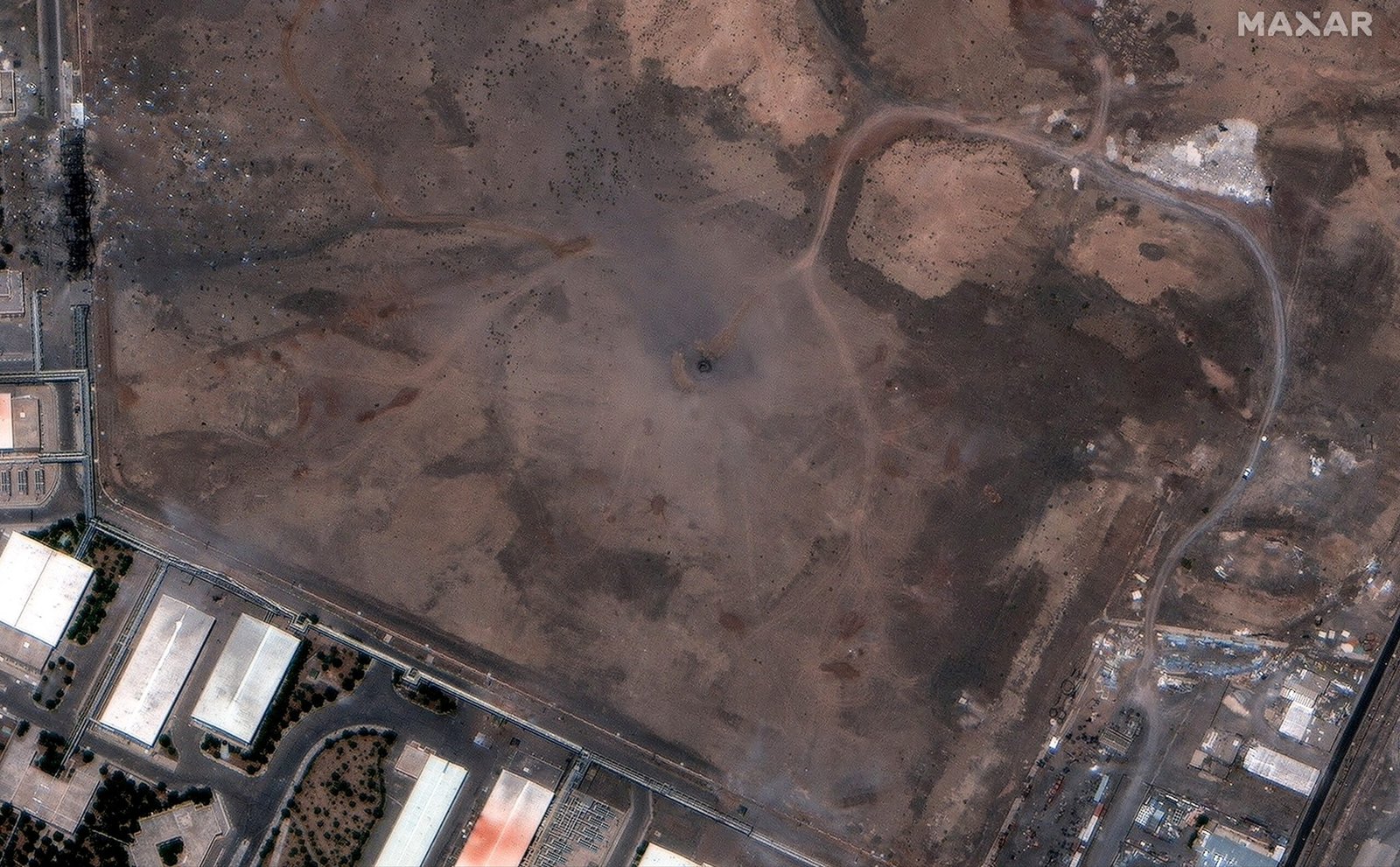Balistic experts say it is too early to determine how much damage the nuclear facilities of Iran suffered in the weekend attack.
On Saturday night, the United States attacked nuclear sites in Iran that is believed to be essential for the country’s capacity to produce nuclear weapons: an uranium enrichment site located in the northwest of Iran, at the bottom of a mountain in Fordo, along with another uranium enrichment site in Natanz and Isfahan Technology Center, used for the uranium metal production.
The Secretary of Defense, Pete Hegesh, told journalists during an early informative session on Sunday that Iranian nuclear ambitions had been “erased”, describing the military strike as “bold and brilliant.”
President Donald Trump echoed that statement on Sunday night, writing on his social media platform, Truth Social, which had done “monumental damage” to all nuclear sites in Iran.
“Obliteration is a precise term!” Trump wrote, adding that the “greater damage” took place well below the ground.

This satellite image provided by Maxar Technologies shows new extensive damage at Natanz’s facilities in Iran after US attacks on June 22, 2025.
Satellite image 2025 Maxar Technologies
But other officials and experts have not gone so far when asked how much damage was caused to the three sites.
The president of the Joint Chiefs, General Dan Caine, said Sunday morning that “will take time” to evaluate how much damage has been done.
“The final battle damage will take some time, but the initial battle damage evaluations indicate that the three sites suffered extremely severe damage and destruction,” Caine said.
There is currently a lack of understanding of the scope of the damage caused by strikes, an Israeli official told ABC News on Sunday. In addition, it is not clear if any material moved from the site of Fordo before the strikes, said the official.
The plan was “well coordinated” and resulted from months of planning between the United States and Israel, said the official.

This satellite image provided by Maxar Technologies shows new damage of extensive buildings in the ISFAHAN facilities in Iran after US attacks on June 22, 2025.
Satellite image 2025 Maxar Technologies
However, the objective of the general operation was to degrade, not destroy, Iran’s nuclear program, said an Israeli source separated to ABC News.
“We did not say that we eliminate the nuclear program,” said the source. “We said to eliminate the immediate existential threat, which is very different.”
Other experts expressed skepticism for the damage that was made to Iran’s nuclear sites.
An expert in high-level European weapons and ballistics told ABC News that it seems “very unlikely.”

The remains of a ballistic missile are on the ground after missile attacks by Iran in Israel, in the midst of the Iran-Israel conflict, in northern Israel, on June 23, 2025.
Avi Ohayon/Reuters
The calculations show that the GBU-57 cannot penetrate more than 65 feet through the underground rock, but the Fordo enrichment site was built to almost 300 feet under the ground, within the solid rock, the expert said.
“Personally, I cannot imagine that a lot of damage has been done,” especially if the underground installation was designed properly, said the ballistic expert.
The United States could have dropped several pumps to make the rock more fragile, allowing a subsequent attack to do more, the expert said.
The evaluation of the underground damage degree in Fordo is not clear, said the general director of the International Atomic Energy Agency Rafael Grossi CNN Fareed Zakaria on Sunday.
“No one else could tell you how much has been damaged,” Grossi said.

A undulating smoke plume after the Israeli strikes in Tehran, on June 23, 2025
UGC/AFP through Getty Images
The scope of the damage caused to the installation on the ground in Natanz is very clear, said Grossi, adding that even the underground centrifuge, used to enrich uranium in higher degrees, suffered widely due to the combined impacts that damaged the external energy supply. Significant damage was also caused in Isfahan, who has been holding attacks for several days, Grossi said.
The real range of damage to the three sites, including their nuclear infrastructure and what remains, cannot be determined until IEA inspectors or members of the international community can access them, Aditi Verma, assistant professor in the Department of Nuclear Engineering and Radiology at the University of Michigan, said ABC News.
Experts are generally required It is time to complete the damage evaluations by military action, so the total scope of degradation to Iran’s nuclear facilities will probably remain unknown for some time, said John Erath, director of Senior Policy of the Center for Weapons Control and non -proliferation, he told ABC News.
It is likely that the environmental impacts of the strikes, both chemical and radiological, are limited to the immediate area, said Verma.
Until now, no high levels of radioactivity are reported, he told ABC News, Emily A. Caffrey, director of the Health Physics Program at the University of Alabama in Birmingham.
“That is not surprising taking into account the nature of the material that was presumed to be present on the site,” Kathryn Ann Higley, a distinguished professor of nuclear sciences at the State University of Oregon and president of the National Council for Protection and Radiation Measurements, told ABC News.

This satellite image provided by Maxar Technologies shows new damage of extensive buildings in the ISFAHAN facilities in Iran after US attacks on June 22, 2025.
Satellite image 2025 Maxar Technologies
Uranium, even enriched uranium, is only slightly radioactive, said Higley. But the absence of radiological signature should not be taken as an indication of failure or success of military action, Higley added.
But a “significant” concern is that the attacks will permanently eliminate Iran of the international system of legal frameworks and norms that have prevented the Iranian government from building a weapon, Verma said.
“As we know, Iran has a history of development of clandestine enrichment facilities,” said Verma.
Leaders on all sides should use intermediate time to find a diplomatic solution that makes more military actions unnecessary, Eath said.





